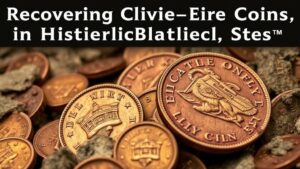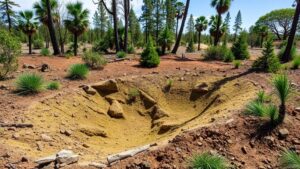Unearthing Gold Coins in Historic Trade Posts and Supply Depots
Unearthing Gold Coins in Historic Trade Posts and Supply Depots
The discovery of gold coins at historic trade posts and supply depots offers a fascinating glimpse into the economic dynamics of past societies. These sites, where goods and currency exchanged hands, serve not only as archaeological treasures but also as vital clues about trade, culture, and the means of communication in historical contexts. This article delves into the significance of these discoveries, the methods used to unearth them, and notable case studies that highlight the importance of such findings in understanding historical economies.
The Historical Context of Trade Posts and Supply Depots
Trade posts and supply depots emerged as essential hubs for commerce during different historical periods, particularly during colonial expansions and in the context of global trade networks. e locations functioned as nodes where merchants, explorers, and traders convened to exchange goods, ideas, and, importantly, currency.
Gold coins, often deemed as symbols of wealth and economic power, were frequently utilized for trade. Their discovery at trade posts allows historians to piece together intricate trading systems and the geopolitical landscapes of the times. These locations often serve as windows into broader trade routes, showcasing the interplay between local economies and international forces.
Methods of Discovery
Unearthing gold coins involves both traditional archaeological excavation methods and modern technologies. Archaeologists employ a range of techniques to ensure a comprehensive and systematic exploration of historic sites.
- Site Surveys: Initial reconnaissance involves thorough surveys to assess the potential of a site based on historical documents and previous findings.
- Geophysical Techniques: Techniques such as ground-penetrating radar (GPR) help detect buried structures without physical excavation, minimizing disturbances.
- Excavation: Once promising sites are identified, careful stratigraphic excavation is employed, allowing for the systematic removal of layers of soil.
- Metal Detection: The use of metal detectors plays a crucial role, enabling archaeologists to identify metallic objects like gold coins efficiently.
This multi-faceted approach not only enhances the rate of discovery but also preserves the integrity of the historical site, ensuring that valuable contextual information is retained.
Case Studies: Successful Discoveries
Numerous successful excavations have uncovered significant caches of gold coins in historic trade posts and supply depots, providing vital insights into past economies and cultures.
1. The Pomeranian Coin Hoard
Discovered in Poland near an old trade route, the Pomeranian Coin Hoard consisted of over 1,500 gold coins dating back to the 15th century. This find revealed critical aspects of the trade network between Western Europe and the Baltic region. Researchers found that the coins were largely minted in cities like Nuremberg, indicating robust trade connections and the influence of the Hanseatic League.
2. The Spanish Galleon Finds
In the shallow waters off the coast of Florida, several shipwrecks of Spanish galleons have revealed thousands of gold coins. The discovery of coins minted during the days of the Spanish Empire has not only increased our understanding of maritime trade routes but also offered glimpses into the wealth and architectural styles of the colonial period. coins recovered from shipwrecks like that of the Nuestra Señora de Atocha indicate the scale of wealth that flowed into Europe from the Americas.
3. Fort George Excavations
At Fort George in New York, archaeologists have excavated several gold coins dating back to the late 18th century. This supply depot was pivotal during the American Revolutionary War. coins unearthed there provided insights into the economy of the time, showcasing the importance of currency in sustaining military operations and local commerce.
The Impact of Discovering Gold Coins
The unearthing of gold coins at historic sites transcends mere monetary value; it impacts various fields such as economics, archaeology, and history. The findings allow researchers to:
- Reconstruct Trade Systems: They help historians understand trade networks and economic relations among different cultures.
- Assess Cultural Exchange: Coins often carry designs and inscriptions that reflect the cultural and artistic influences of the time.
- Enhance Educational Outreach: Discoveries attract attention to historical sites, stimulating interest and education about past economies.
Conclusion
Unearthing gold coins in historic trade posts and supply depots is not merely about the thrill of discovery. These findings play a fundamental role in reconstructing and understanding historical trade dynamics, cultural exchanges, and economic strategies. As excavation techniques advance, we can anticipate further breakthroughs that might continue to reshape our understanding of the past. For those interested in archaeology or history, engaging with these discoveries offers an opportunity to connect with the rich tapestry of human economic interaction.
For future enthusiasts and researchers, it is crucial to continue supporting archaeological explorations and advocating for the protection of historic sites, ensuring that the legacies of these past transactions are preserved for generations to come.



